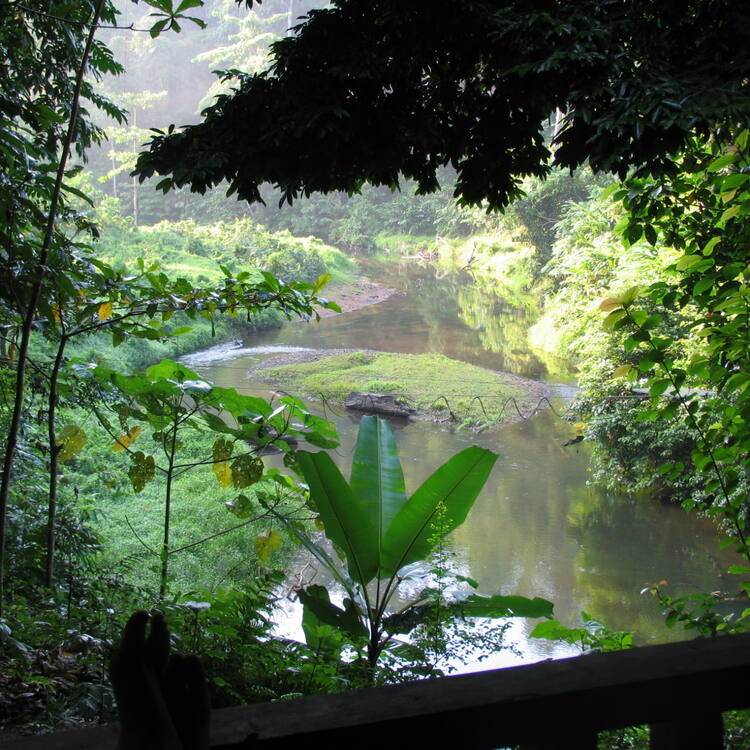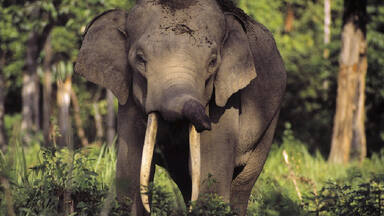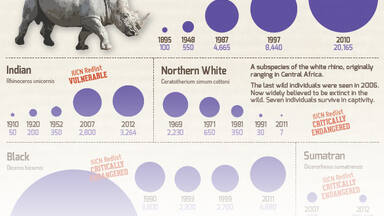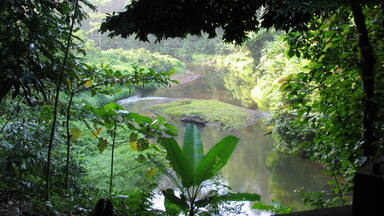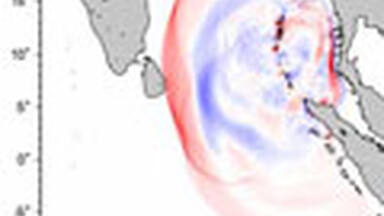Tropical Rainforest Heritage of Sumatra
Tropical Rainforest Heritage of Sumatra
The 2.5 million hectare Tropical Rainforest Heritage of Sumatra site comprises three national parks: Gunung Leuser National Park, Kerinci Seblat National Park and Bukit Barisan Selatan National Park. The site holds the greatest potential for long-term conservation of the distinctive and diverse biota of Sumatra, including many endangered species. The protected area is home to an estimated 10,000 plant species, including 17 endemic genera; more than 200 mammal species; and some 580 bird species of which 465 are resident and 21 are endemic. Of the mammal species, 22 are Asian, not found elsewhere in the archipelago and 15 are confined to the Indonesian region, including the endemic Sumatran orang-utan. The site also provides biogeographic evidence of the evolution of the island.
Description is available under license CC-BY-SA IGO 3.0
Patrimoine des forêts tropicales ombrophiles de Sumatra
Le site du Patrimoine des forêts tropicales ombrophiles de Sumatra (2,5 millions ha) comprend trois parcs nationaux : Gunung Leuser, Kerinci Seblat et Bukit Baristan Selatan. Ce site possède un potentiel immense pour la préservation à long terme des faune et flore spécifiques à Sumatra, y compris de nombreuses espèces menacées. L’aire protégée abrite quelque 10 000 espèces de plantes dont 17 genres endémiques ainsi que plus de 200 espèces de mammifères et quelque 580 espèces d’oiseaux dont 465 sont résidentes et 21 endémiques. Parmi les espèces mammifères, 22 sont des espèces asiatiques que l’on ne trouve nulle part ailleurs dans l’archipel indonésien, et 15 sont inféodées à la région indonésienne, notamment l’orang-outan endémique de Sumatra. Le site constitue également un témoignage biogéographique de l’évolution de l’île.
Description is available under license CC-BY-SA IGO 3.0
تراث الغابات الاستوائية المتغذية من المطر في سمطرة
يتضمن موقع تراث الغابات الاستوائية المتغذية من المطر في سمطرة (2.5 مليون هكتار) ثلاثة منتزهات وطنية: غونونغ لوزير ، وكيرينسي سيبلات، وبوكيت باريستان سيلاتان. ويتمتع هذا الموقع بقدرة هائلة على المحافظة على المدى الطويل على الثروة الحيوانية والنباتية الخاصة بسمطرة، بما في ذلك أجناس كثيرة معرضة للانقراض. وتؤوي المساحة المحمية حوالى 10 آلاف جنس نباتي منها 17 نوعًا استيطانيًا وأكثر من 200 جنس من الثدييات وحوالى 580 جنسًا من الطيور منها 465 جنسًا قاطنًا و21 مستوطنًا. ومن بين أجناس الثدييات، 22 هي أجناس أسيوية لا نجدها في أي مكان آخر في الأرخبيل الأندونيسي، و15 منسوبة إلى المنطقة الأندونيسية، لا سيما السعلاة (الأورنغ-أوتان) المستوطنة في سمطرة. ويشكل الموقع أيضًا شهادة بيوجغرافية على تطور الجزيرة.
source: UNESCO/CPE
Description is available under license CC-BY-SA IGO 3.0
苏门答腊热带雨林
苏门答腊250万公顷的热带雨林由三个国家公园组成:古农列尤择(Gunung Leuser)、布吉克尼西士巴拉(Kerinci Seblat) 以及巴瑞杉西拉坦(Bukit Barisan Selatan)国家公园。这里拥有长期保护苏门答腊种类各异且多样化的生物群和濒危物种的巨大潜力。保护区中约有1万种植物种类,包括17个本地种类;超过200种的哺乳动物;580种鸟类,其中465种是不迁徙的,21种是当地特有的。在哺乳动物中,22种是亚洲特有的,15种仅限于印尼地区,其中包括苏门答腊猩猩。该保护区也提供了这个岛进化的生物地理学证据。
source: UNESCO/CPE
Description is available under license CC-BY-SA IGO 3.0
Девственные влажно-тропические леса Суматры
Объект наследия, площадью 2,5 млн га, включает три национальных парка: Гунунг-Лейзер, Керинси-Себлат и Букит-Барисан-Селатан. Уникальное расположение парков позволило организовать систему долговременной охраны дикой природы Суматры и сбережения целого ряда исчезающих видов. На территории отмечено 10 тыс. видов растений (при этом 17 родов – эндемичны), более 200 видов млекопитающих, около 580 видов птиц (из них 465 видов являются местными, 21 вид эндемичен). Среди млекопитающих присутствуют индонезийские и суматранские эндемики, к примеру, суматранский орангутан. Биогеографические исследования территории трех парков позволяют сделать выводы относительно эволюционного развития всего острова.
source: UNESCO/CPE
Description is available under license CC-BY-SA IGO 3.0
Patrimonio de los bosques lluviosos tropicales de Sumatra
Este sitio tiene una superficie de 2.500.000 hectáreas y comprende los tres parques nacionales de Gunung Leuser, Kerinci Seblat y Bukit Barisan Selatan. Ofrece posibilidades óptimas para la conservación a largo plazo de la fauna y flora específicas de Sumatra, comprendidas muchas especies en peligro de extinción. En el área protegida viven 10.000 especies vegetales, de las que 17 son endémicas, así como más de 200 especies de mamíferos y unas 580 especies de aves, de las que 465 son residentes y 21 endémicas. Entre los mamíferos, hay 22 especies asiáticas que sólo se encuentran en el archipiélago indonesio y 15 son exclusivas de la región, en particular el orangután endémico de Sumatra. El paisaje del sitio aporta además un testimonio biogeográfico de la evolución de la isla.
source: UNESCO/CPE
Description is available under license CC-BY-SA IGO 3.0
スマトラの熱帯雨林遺産
200万haにおよぶスマトラ島の熱帯雨林は、グヌン・ルセル国立公園(86万ha)、ケリンチ・セブラ国立公園(138万ha)、ブキット・バリサン・セラタン国立公園(36万ha)の3つの保護地域からなる。スマトラ島の熱帯雨林には、17の固有の属を含む1万種の植物、200種の哺乳類(うち15種が固有種)、580種の鳥類(うち21種が固有種9が生息している。この地域は、WWF(世界自然保護基金)が優先的に保全をめざすべきエコリージョン(生態域)として選定する「グローバル200」の一つに選ばれている。source: NFUAJ
Tropisch Regenwoud van Sumatra
De 2,5 miljoen hectare tropisch regenwoud van Sumatra bestaat uit drie nationale parken: Gunung Leuser, Kerinci Seblat en Bukit Barisan Selatan. Het gebied heeft het grootste potentieel om de onderscheidende en diverse flora en fauna van Sumatra – waaronder veel bedreigde diersoorten – te behouden op lange termijn. Het tropisch regenwoud is de thuisbasis van naar schatting 10.000 plantensoorten (waaronder 17 inheemse geslachten), meer dan 200 soorten zoogdieren en zo'n 580 vogelsoorten, waarvan er 465 standvogel zijn. Van de zoogdieren zijn er 22 Aziatisch, die nergens anders in de archipel voorkomen. 15 beperken zich tot de Indonesische regio, waaronder de Sumatraanse orang-oetan.
Source: unesco.nl
Outstanding Universal Value
Brief synthesis
The Tropical Rainforest Heritage of Sumatra (TRHS), Indonesia comprises three widely separated National Parks; Gunung Leuser (GLNP), Kerinci Seblat (KSNP) and Bukit Barisan Selatan (BBSNP), and covers a total area of 2,595,124hectares, constituting one of the biggest conservation areas in Southeast Asia. The site is located on Bukit Barisan range and holds the greatest potential for long-term conservation of the diverse biota of Sumatra, including many endangered species.
The biodiversity of the property is exceptional in terms of both species numbers and uniqueness. There are an estimated 10,000 species of plants, including 17 endemic genera. Animal diversity in TRHS is also impressive, with 201 mammal species and some 580 species of birds, of which 465 are resident and 21 are endemics. Of the mammal species, 22 are endemic to the Sundaland hotspot and 15 are confined to the Indonesian region, including the endemic Sumatran orang-utan. Key mammal species also include the Sumatran tiger, rhino, elephant and Malayan sun-bear.
The TRHS includes the highest volcano in Indonesia, Gunung Kerinci (3,805 m asl) along with many other physical features of exceptional natural beauty, including; Lake Gunung Tujuh the highest lake in Southeast Asia, numerous other volcanic and glacial high-altitude lakes, fumaroles, waterfalls, cave systems and steep rocky backdrops. Both Gunung Leuser National Park and Bukit Barisan Selatan National Park contain frontages to the Indian Ocean, making the altitudinal range of the TRHS extend from the highest mountains on Sumatra to sea level. All three protected areas in the TRHS exhibit wide altitudinal zonation of vegetation, from lowland rainforest to montane forest, extending to sub-alpine low forest, scrub and shrub thickets and covering an astounding diversity of ecosystems.
Criterion (vii): The parks that comprise the Tropical Rainforest Heritage of Sumatra are all located on the prominent main spine of the Bukit Barisan Mountains, known as the ‘Andes of Sumatra’. Outstanding scenic landscapes abound at all scales. The mountains of each site present prominent mountainous backdrops to the settled and developed lowlands of Sumatra. The combination of the spectacularly beautiful Lake Gunung Tujuh (the highest lake in southeast Asia), the magnificence of the giant Mount Kerinci volcano, numerous small volcanic, coastal and glacial lakes in natural forested settings, fumaroles belching smoke from forested mountains and numerous waterfalls and cave systems in lush rainforest settings, emphasise the outstanding beauty of the Tropical Rainforest Heritage of Sumatra.
Criterion (ix): The Tropical Rainforest Heritage of Sumatra represent the most important blocks of forest on the island of Sumatra for the conservation of the biodiversity of both lowland and mountain forests. This once vast island of tropical rainforest, in the space of only 50 years, has been reduced to isolated remnants including those centered on the three components of the property. The Leuser Ecosystem, including the Gunung Leuser National Park, is by far the largest and most significant forest remnant remaining in Sumatra. All three parks would undoubtedly have been important climatic refuge for species over evolutionary time and have now become critically important refuge for future evolutionary processes.
Criterion (x): All three parks that comprise the Tropical Rainforest Heritage of Sumatra are areas of very diverse habitat and exceptional biodiversity. Collectively, the three sites include more than 50% of the total plant diversity of Sumatra. At least 92 local endemic species have been identified in Gunung Leuser National Park. The property contains populations of both the world’s largest flower (Rafflesia arnoldi) and the tallest flower (Amorphophallustitanium). The relict lowland forests in the sites are very important for conservation of the plant and animal biodiversity of the rapidly disappearing lowland forests of Southeast Asia. Similarly, the montane forests, although less threatened, are very important for conservation of the distinctive montane vegetation of the property.
Integrity
The serial property straddles the equator and comprises three widely separated nationally protected areas along the Bukit Barisan Mountain Range, running from Aceh in the north-west to Bandar Lampung in the south-east and representing whole or part of the three most significant remnant “islands” of the once vast Sumatran forests. Biological and ecological processes are preserved within the property because it contains a sufficiently large number of ecosystems, forest types, ranges of altitudes and topographies. The exceptionally beautiful features of Sumatra such as Gunung Tujuh and Gunung Kerinci are contained within the site in their entirety.
The unique shape and size of the property provide significant habitat for in-situ conservation of thousands of Sumatran species, in particular species that require larger home ranges like Sumatran tiger, Sumatran orang-utan, Sumatran elephant, Sumatran rhino and Sumatran ground cuckoo. The property is a living laboratory for science and contains some of the most distinguished research centres in Indonesia (Way Canguk, Ketambe and Suaq Belimbing) and hosts international high-level collaborations from world renowned institutions.
Threats to the integrity of the property include road development plans as well as agricultural encroachment. The main fundamental threatening processes are directly linked to the access provided by roads and failure to effectively enforce existing laws. Road access facilitates illegal logging, encroachment and poaching which all pose significant threats to the integrity of the component parks of the property. Collaboration with stakeholders, including Rhino Protection Unit (RPU), WWF Elephant Patrol, FFI Tiger Protection and Conservation, Zoological Society of London – Tiger Conservation has significantly reduced poaching incidents. Joint patrols with related parties including police officers and local government officers, and rangers recruited from local communities, support the Ministry of Forestry to enforce existing laws.
Protection and management requirements
The TRHS is comprised of three national parks, and as such benefits from the highest protected area status under Indonesian law. All three parks are public lands designated as national parks by the Government of Indonesia and are managed by the Directorate General of Forest Protection and Forest Conservation (PHKA) within the Ministry of Forestry. The boundaries of the three component parts of the property require clear demarcation to indicate their location in the field. This is particularly important with regards to effective management of the property and the inclusion of important habitat national resources, but only a limited proportion of the property’s perimeter can be marked per year. For Kerinci Seblat National Park, the inclusion of 14,160 hectares former production forest of the Sipurak Hook area in 2004, delayed the recent boundary demarcation process due to the negative response from the inhabitants of the area.
The property has strong and clearly explained management plans and each is included in the Indonesian Biodiversity National Strategy and Action Plan. Stakeholder forums have been established in each park and include bi-annual dialogue with local governments, national and international NGOs, local people and private sectors. However, there is variation in the involvement and contribution of these stakeholders in the three parks, which needs to be addressed. Intensive coordination among park management remains a priority with acknowledgement that coherent and coordinated protection measures among the three parks are paramount in the effective protection of flora and fauna, and particularly for threatened species.
A Presidential decree on illegal logging and saw-mill eradication issued in 2005 was followed-up by an integrated effort from the provincial and district governments, as well as from the Departments of Justice, Police and Forestry. As a result these threats have been virtually eradicated from the property. Mining, which occurs exclusively outside the boundaries of the property, remains a potential threat to the property. Within the property anti-poaching units are active, while site-specific human-wildlife conflict mitigation and anti-encroachment efforts are in place. Encroachment remains the most complex and difficult issue affecting the property and attempts to address it at a national level through the “Kelompok Kerja Penanganan Perambahan”, an Indonesian-wide Anti Encroachment Task Force are required. The threat to the integrity of the property from road development requires effective planning, environmental assessment and regulatory measures to protect the property from damage to its Outstanding Universal Value.
Routine forest patrols take place in every park, along with site-specific law enforcement actions and encroachment eradication programmes. The State Party has made financial support for the TRHS a priority, with the aim to improve ground level management, particularly concerning building staff capacity to combat illegal wildlife trade and encroachment. The size of the property, while providing a degree of protection, requires adequate and increased patrolling efforts and human resources to adequately cover the property, and establishment of an effective GIS based monitoring system would assist with this. The recruitment of local rangers is also encouraged. Invasive species also provide an additional emerging management issue in certain components of the property.
